Published on May 26, 2013
Stranded on the icepack in the cold Arctic north, the survivors from the crash of the airship Italia carefully collected what supplies they could find. Once an inventory was taken, the men worked out that they could survive for 45 days if they limited themselves to 300 grams of food per day. As well, they had a Colt revolver and the emergency radio, the latter being the most important find amidst the wreckage, seconded only by the survival tent. In hopes of catching the eye of a passing search aircraft — one that they hoped would soon come once they had established radio contact — the men used several found dye markers to stain the tent with wide red streaks.
Despite the red tent, the men would face weeks of difficulty. Their problems began when it seemed the bizarre possibility that nobody knew that they had crashed, despite their regular emergency SOS broadcasts, had actually come to pass. Only weeks later, as a result, would the air search finally begin.
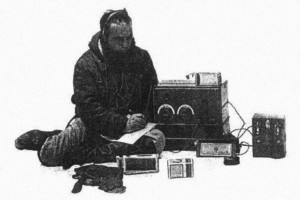
Radio Issues
As Guiseppe Biagi, the radioman, repeatedly broadcast his message, “SOS NOBILE IDO 32”, he was stunned to discover that his weak signal was being ignored amidst regular radio traffic. The radio crew on the Citta di Milano was not even paying attention to the radio watch. Instead, they were busying themselves with broadcasts of pre-written messages from the airship crew to the waiting ears of the journalists across Europe and most within Italy. Clearly, there was no idea yet that the Italia had crashed and that the crew was in desperate need of rescue. As despair and frustration mounted, twice, the Swedish meteorologist Malmgren implied that he wanted to commit suicide. He was wracked with guilt for the decision to turn the Italia back toward Spitsbergen and into the bad weather. The men watched him carefully, hoping that with time he would come to understand that it had been Nobile’s decision in the end, even if he had followed the Swede’s advice.
Six days of radio messages passed without reply while Biagi listened to the mundane news and regular updates of personal crew messages to family back home in Italy. A new despondency set in. While the tent was designed for four men, nine were crammed inside and, despite that its design was based on the experiences of previous Arctic expeditions, it was freezing cold inside. Hunger was growing as the men held to the 300 grams of daily ration. The one positive note was that the navigators had been able to establish their exact position at the time of the crash — they were at 81° 14′ N x 28° 14′ E — and had been updating it ever since. The icepack was drifting steadily along covering about 9 km per day, generally toward the edge of Norway’s northernmost islands. On May 29, Finn Malmgren shot and killed a polar bear with the Colt revolver — at least the men could eat meat for a time, in fact 400 pounds of it.

Rescue Attempts Begin
With no response to their regular radio distress calls, the crew felt that they were on their own and would have to rescue themselves. On May 28, they spotted the islands of Broch and Foyn on the horizon. They waited, carefully plotting their position, until they were coming to a point that would result in the least distance. On May 31, three men, the Swede Finn Malmgren and both navigators, Commander Adalberto Mariano and Commander Filippo Zappi, departed to trek across the icepack in hopes of finding someone who might organize a rescue. As they trekked out across the ice, they left seven men behind, two of which were too injured to move.
On June 3, while broadcasting the regular SOS message, Biagi was stunned to receive a reply. A Russian farmer from the village of Vokhma had overheard them on his HAM radio set. Quickly, the farmer notified others and word reached the Italian government and the European press. Rescue operations by air started at once. Moreover, the men of the Italia had broadcast an estimated position, though it had not been properly updated for three days since the two navigators had set out to trek to the Norwegian islands. Nonetheless, it was expected that an intensive air search would soon locate the men. Within a week, a massive effort (at least in terms of the time) was undertaken, involving no less than 22 aircraft.
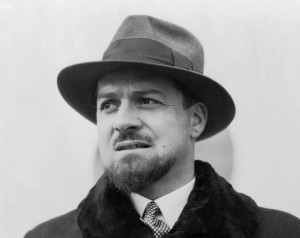
Early Search and Rescue Efforts
The popular notion of search and rescue efforts typically involves nearly immediate dispatch of aircraft to find those in jeopardy. As it was, Arctic flights were dangerous and there were no aircraft positioned that far north to undertake any such immediate search. The Italian government, which should have had the lead role in the air rescue efforts, instead took a back seat. Incredibly, the Air Undersecretary Italo Balbo, who favored fixed wing aircraft, rejected the first calls to send aircraft north. Umberto Nobile’s dirigible designs were seen as budgetary competition for the Italian fixed wing aircraft development programs that Balbo favored. Thus, incredibly, the rescue was placed at a lower priority. Balbo was even overheard at a reception saying that Nobile deserved the crash.
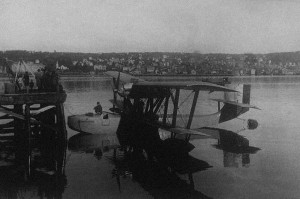
Other nations in Europe, however, took a more active role. Two days later, on June 5, a Norwegian pilot made a first flight, commencing an initial air search which ended unsuccessfully. Over the following week, Swedish, Finnish and Russian aircraft joined the effort. Begrudgingly, the Italians sent two aircraft, initially just one that was paid for by the City of Milano, but later, nearing the end of the effort, a second aircraft would join. On June 8, five days after the Russian farmer had reported the distress call, the support ship Citta di Milano finally tuned in on the proper frequencies, listened carefully and established two way communications with Biagi.
Death and Search Attempts
As numerous aircraft crisscrossed the icepack looking for the red tent, the two navigators and the meteorologist continued to trek their way southward, making slow progress. On about June 16, Finn Malmgren apparently gave up to the guilt he felt and laid himself down to die. The others waited and, though it is not clear what followed, they may have eaten his body in a rare display of cannibalism that was necessary to survive. Later, neither navigator would speak of it and the events remained unconfirmed. With renewed strength, they continued on, walking toward the distant islands.

During that very week, Umberto Nobile’s arch rival, Roald Amundsen, contracted with a French pilot who had been preparing a plane for a transatlantic crossing. The plane was a modified Latham 47 with extended fuel tanks. Amundsen had heard that Nobile’s party was now in radio contact and that their rough position was known as being about 20 miles from Cape Leigh Smith in the Norwegian islands. It can only be guessed that he set out instead to rescue the two navigators and the meteorologist, whose trek had been radioed in by Biagi from the ice, rather than Nobile’s men at the red tent. On June 18, Amundsen and the two pilots of the Latham, Norwegian Leif Dietrichson and Frenchman René Guilbaud, with three other French crewmembers, set out for King’s Bay and flew into a fog off of Tromso. They were never seen again. Almost certainly, they crashed somewhere in the sea of the Norwegian coast.
The Rescue
Finally, on June 20, the Italian military aviator Major Maddalena in his Savoia-Marchetti S.55 seaplane spotted the group and dropped supplies, though most were lost when they broke apart when they hit the ice. Overjoyed, the men on the ice recognized that rescue would be possible, even if it was still days or weeks away. In the interim, more supplies could be dropped to sustain them — hopefully next time with better results. On June 22, as hoped, Major Maddalena and one of the Swedish pilots returned to drop yet more supplies, this time with better planning that allowed them to be safely delivered and recovered. Word was also passed to the men that two Norwegian icebreakers had been dispatched as well as a Soviet icebreaker Krassin.
The leader of the Swedish search and rescue expedition, M. Tornberg, reported in that he felt an aerial rescue would be impossible; while planes could find the men, it would be one of the icebreakers that would ultimately have to make the rescue. Tornberg also noted that he had no hope for the three men who had set out on foot. Almost immediately, further hampering the search, the Russian icebreaker Krassin broke her propeller and damaged her rudder, leaving the ship adrift in the Arctic while makeshift repairs were attempted.
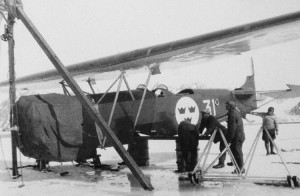
A day later on June 23, the Swedish pilot Einar Lundborg flew back to the red tent, this time having mounted skis on his Fokker hydroplane. Having clearly ignored the Swedish rescue chief, M. Tornberg, he landed on the ice and walked the short distance to the camp. There, despite the commander’s objections, he convinced Nobile to fly out with him to organize the rescue efforts from Spitsbergen. It was certainly a valid request, as Nobile was injured badly and not recovering well. Further, the international rescue efforts was entirely uncoordinated as the various pilots did little to plan their search and rescue efforts together or share information. While Nobile protested of his desire to be the last of his men to leave the ice, the practical nature of the Swede finally convinced him — “this is no opera”, he told Nobile. The flight out was a success, carrying Nobile in the Fokker’s second seat. It seemed that M. Tornberg’s report claiming aerial rescue was impossible had just been proven wrong.
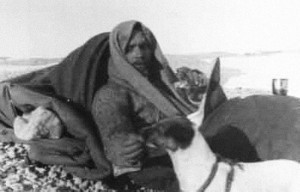
The next day, Lundborg returned again to pick up a second man. Ill fate intervened, however, and he crashed his plane onto the icepack — thankfully, he was uninjured. Lundborg too would need rescue. Soon thereafter, as part of the ice started to crack beneath the camp, the remaining men moved the tent over to the crash site and erected it under the overturned Fokker’s fuselage.

Final Rescue
On July 6, another Swedish pilot, Birger Schyberg, flew in and landed on the ice to retrieve the downed Swedish pilot. His light Moth ski-biplane could carry but one man out and, after some discussion, he convinced the crew of the Italia that he would return to rescue them next, one at a time in the second seat of the airplane. Once back at King’s Bay with Einar Lundborg, however, he changed his mind — he never returned.
In a sense, the Swedish pilot’s decision did not contribute to any further problems — on July 11, an airplane from the Soviet icebreaker located the missing two navigators as they were trekking across the ice. The next day, they were picked up by the Soviet ship, which also then proceeded to rescue the remaining men from the Nobile’s red tent camp. The final rescues of the day were the two Soviet aviators who had done a precautionary landing on the icepack after experiencing trouble soon after spotting the two navigators. As well, an Italian sled team of two men from the Alpini elite forces were picked up — they had defied orders and proceeded on their own to try to rescue the men.

Final Thoughts
The flight and crash of the Italia was Nobile’s last great Arctic expedition. Italy too elected to refocus its efforts in other areas. The country never again undertook a major airship exploration of the Arctic. The men on the Latham 47, including Roald Amundsen, were never found, though numerous searches were undertaken — the most recent being in 2009. To date, the seaplane or men has ever been found, though a pontoon and the gas tank were later recovered off the coast of Norway which, when retracing prevailing currents, gives some idea of where the seaplane might have gone down. Back in Italy, Umberto Nobile was hounded by official inquiries and many detractors. In retrospect, it seems a travesty that much of that blame was less based in Nobile’s own actions and more on the wider fight over which part of Italy’s aviation budget would be assigned to fixed wing vs. dirigible aircraft. He took a beating in the press and within the government. As a result, he resigned from the Italian Air Force and moved to the Soviet Union to continue experiments with airships.
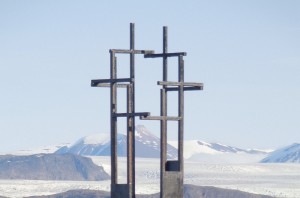
Later, he lived in the USA and then returned to Italy. After WWII, the Italian Air Force officially forgave him all claims of responsibility for the disaster of the Italia. He was reinstated and given back pay to 1928 — with that sum of money, he ran for political office and later retired to teaching and writing about his Arctic exploits. As for Italo Balbo, the Air Undersecretary, he emerged as one of Italy’s leading Blackshirts, espousing extreme anti-semitism and a hardline pro-Nazi ideology. At the start of WWII, while flying back to Tobruk during the North African campaign, he was shot down and killed by friendly fire. Thus, Umberto Nobile may have been embittered by the fierce rivalries he had to endure, but in the end, he outlived them all. Finally, in 1978, he passed away at the age of 93.
By the way, Umberto Nobile’s loyal dog, the fox terrier named Titina, survived the ordeal on the ice and was rescued along with Nobile. Like Nobile, the dog’s Arctic exploration days were done.

A good book that goes into great detail and clearly exonerates Umberto Nobile of blame is ‘Ice Crash’ by Alexander McKnee (Published 1979 – ISBN 0-285-62390-7). It is easily available on a number of bookstore websites, including ABEBooks and Amazon — through this link HERE.
Toodle pip!
Nigel Dingley
The final sentence on Italo Balbo is largely incorrect. While it is true that he was a leading Blackshirt, a violent person and certainly no democrat, he openly opposed racial laws against the Jews during a session of the “Gran Consiglio” (a kind of un-elected fascist parliament) in the presence of Mussolini.
As a governor of Libya he favoured the immigration of Jews, especially from his birthplace, Ferrara. He was also appreciated by the community of Libyan Jews that existed at that time. Moreover, he was against Nazism, and opposed the entry of Italy into the war on their side. Needless to say, his opposition was not motivated by humanitarian reasons, but simply based on Italian nationalism.
He died in a (probably genuine) friendly fire accident in Libya. Because of his known opposition to some aspects of fascism, rumors of a fabricated accident were widely believed at that time.
This is not intended to be a “revisionist” reply, I think that the opinions reported above are easily supported by scholarly books.
A reasoned and excellent post and thank you for pointing this out.
— The staff at HW.